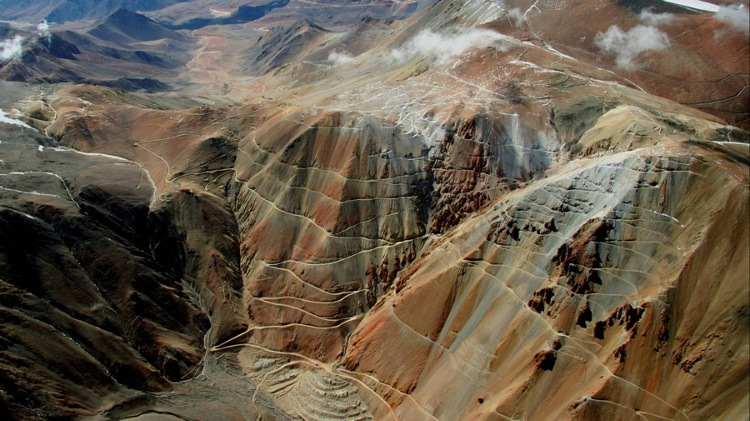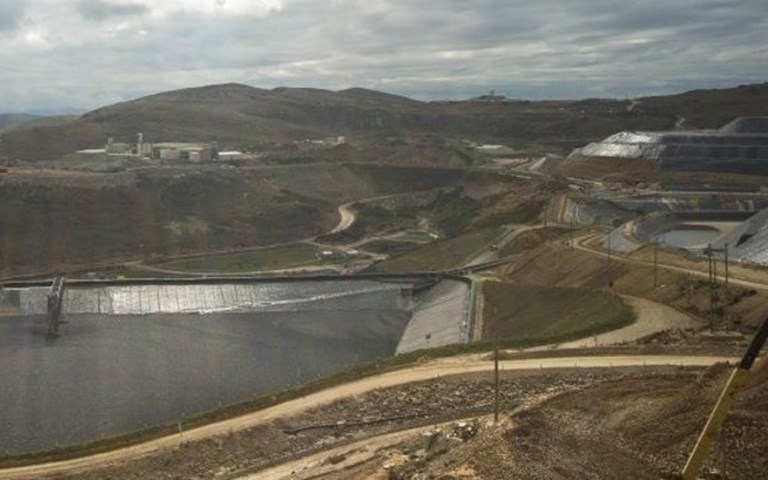Barrick took a US$405-million impairment charge for its Lagunas Norte mine in Peru after deciding not to proceed with a project to treat refractory sulfide ore. Courtesy of Barrick Gold
Barrick Gold posted an asset impairment of US$405 million for its Lagunas Norte open-pit leach operation in Peru in its third-quarter results, resulting in a net loss of US$412 million for the quarter. The company reported adjusted net earnings of US$89 million.
The report, published Wednesday, said the impairment was related to the results of an updated feasibility study for two proposed projects at the operation: the processing of carbonaceous minerals (CMOP) and the treatment of refractory sulfide ore (PMR). The study recommended the CMOP project should proceed while the PMR project should not, resulting in the value write-down.
The report provides little detail as to the reason why the PMR project was put on hold, but Barrick spokesperson Andy Lloyd told CIM Magazine in an email that “it was clear that more value lay in advancing the carbonaceous oxide component of the project.”
Progressing CMOP first “will allow our exploration and study teams to focus on nearby exploration targets, which could supplement the existing refractory ore resource,” Lloyd explained over email, “which in turn could support the addition of refractory processing in the future.”
As such, the value Lagunas Norte lost in the impairment has not completely disappeared.
“It was not that the refractory processing was found to be infeasible,” Lloyd said. “It was more about value and prioritization within our overall portfolio.”
Related: After Chile orders closure of Pascua-Lama surface facilities, Barrick downgrades project’s gold reserves to resources
The report also covers Barrick’s overall performance for the quarter. According to the company, gold and copper production increased while sales costs decreased, leading to quarterly revenues of US$1.84 billion. Barrick also reduced its corporate administration cost guidance from US$275 million to US$235 million by making cuts in a move towards decentralization of its mines.
The highly publicized merger between Barrick and Randgold has also had a significant effect on both companies’ share prices as well. The report said that since the merger was announced, Barrick and Randgold shares jumped 25 and 28 per cent, respectively.
One of the big questions concerning the upcoming merger is the fate of Barrick’s Tanzanian assets, which are under ownership of subsidiary Acacia Mining. Acacia is currently in a dispute with the Tanzanian government, which has banned exports of mineral concentrates from the country and handed Acacia a US$190 billion tax bill.
In the report, Barrick said it is in talks with the Tanzanian government, but claims it is not negotiating on Acacia’s behalf. When asked about the the progress of these discussions, Barrick senior vice-president of strategic matters Kevin Thomson said on a conference call that the discussions are progressing, albeit slowly.
“We had a team in Tanzania last week,” Thomson said. “Discussions have slowed down but they are ongoing and we continue to be optimistic we will get to the right place.”
There is currently no timetable for when the negotiations might be concluded, Thomson added.
A Bloomberg report from Tuesday claimed Barrick would be looking into regaining complete control over the Tanzanian assets once the merger with Randgold was finished. However, according to Thomson, Barrick has had “no discussions with Acacia about a potential private transaction.”



